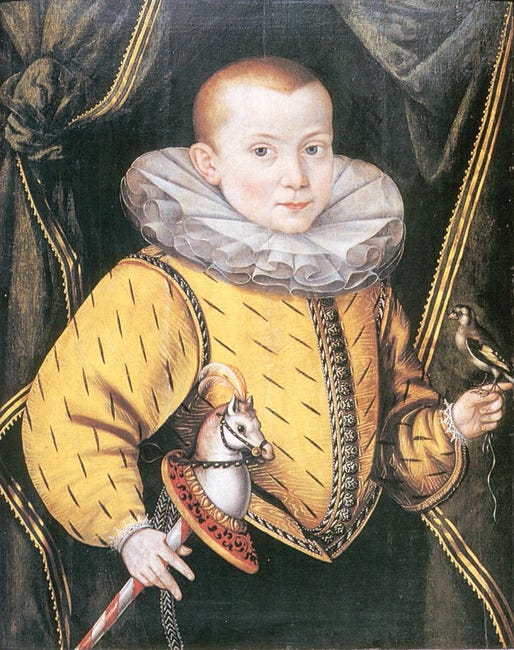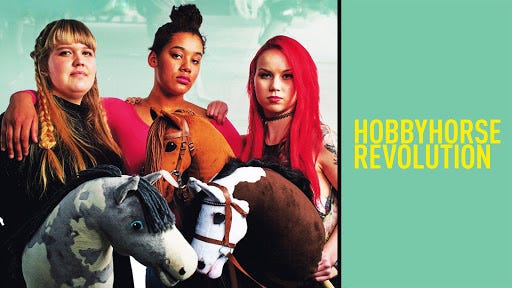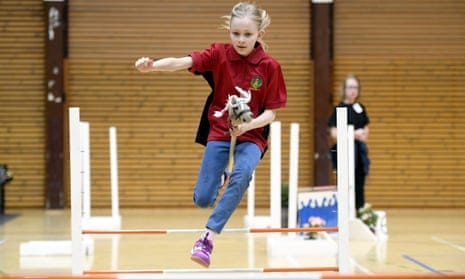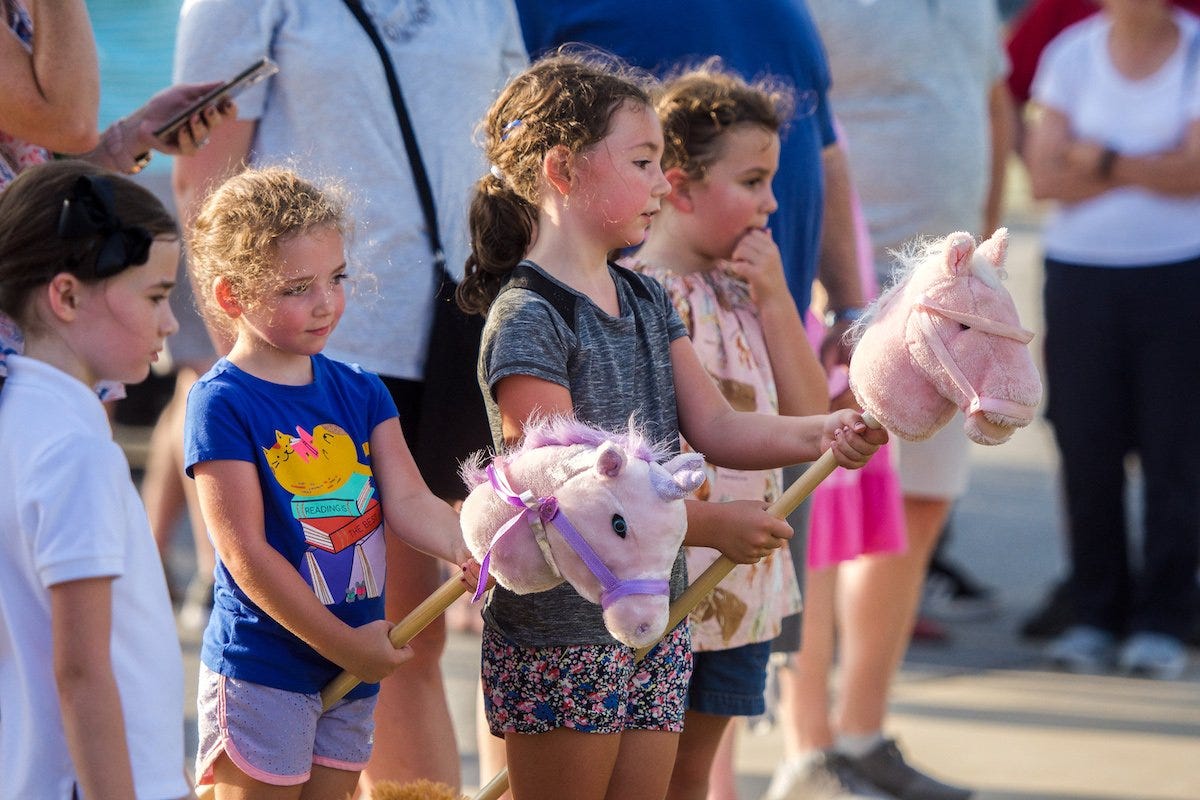What is Hobbyhorsing?
Is Finland's underground activity going mainstream?
Recently I saw an unusual video clip online.
It featured a young girl on a horse, galloping in circles in front of a crowd.
She then jumped over a series of poles, each one higher than the last.
But what caught my eye was that the horse in the video was not real.
It was made of fabric, and on a stick.
What was I seeing?
I was curious…
What I stumbled on in the video was something called hobbyhorsing…
Hobbyhorsing has a lot in common with equestrian sports like showjumping and dressage.
In showjumping, an athlete rides a horse over a set of jumps.
In dressage, a horse and rider perform a series of predetermined movements.
In hobbyhorsing, a rider mimics the movements of showjumping and dressage events – trotting or jumping over obstacles.
But in hobbyhorsing, instead of riding an actual horse, the rider uses a hobbyhorse, i.e. a fabric horse head on a stick.
It may not involve a real horse, but hobbyhorsing does require coordination, athleticism, and poise.
And competitors are judged on their skills, their creativity, and their execution.
Just like other equestrian events.
But unlike actual horseriding, hobbyhorsing doesn’t come with the high price tag of expensive equipment or facilities.
It can be done rain or shine, indoors or outdoors, alone or with friends.
It’s also an outlet for creativity and self-expression, as many of the riders make their own hobbyhorses.
So how did it get started?
While the hobbyhorse itself dates back to the 16th century, the history of hobbyhorsing is harder to pin down.
It started as an underground activity in Finland, and has grown in popularity over the last 20 years, thanks in large part to social media.
While there are many hobbyhorse enthusiasts who participate simply for fun, there are thousands of people who consider hobbyhorsing a competitive sport, and take it seriously.
Finland’s hobbyhorse enthusiasts are supported by The Finnish Hobbyhorse Association, which was originally founded “around 2002.”
The Association has been hosting hobbyhorse competitions for more than a decade, where riders can test their skills in events including showjumping, western riding, and dressage.
While the hobbyhorsing community is dominated by young girls, the Finnish Association says there are also “plenty of adults in the community.”
In 2012, Finnish filmmaker Selma Vilhunen stumbled across a discussion board full of messages from hobbyhorse enthusiasts – and was instantly curious.
“It was like a secret society,” she said.
Vilhunen decided to document the stories of young hobbyhorse enthusiasts in Finland as they prepared for competition.
Her 2017 documentary, Hobbyhorse Revolution, showed that there was a lot more to hobbyhorsing than people might have thought.
The young women in the film showed how hobbyhorsing was not just an outlet for creativity and imagination, but also a way to connect with others, and be part of a community.
“I like making horses and creating the personalities of the horses, sharing the horses with others and telling other hobbyists about them,” said Elsa Salo, one of the stars of the film.
“The community is so tolerating and we accept everyone the way they are.”
Hobbyhorse enthusiasts give their hobbyhorses proper names, groom them, and exchange and sell them, just like real horses.
But the stars of Hobbyhorse Revolution are quick to point out that hobbyhorse enthusiasts don’t think the hobbyhorses are real.
Hobbyhorse Revolution raised the profile — and interest — in hobbyhorsing.
What started as an underground community has grown tremendously, and there are now more than 10,000 hobbyhorse enthusiasts in Finland alone.
And each year hobbyhorse competitors and fans travel to Seinäjoki, Finland to attend the biggest hobbyhorsing competition1 in the world.
The 2024 event attracted more than 1900 visitors and participants from both Finland and abroad.
And while hobbyhorsing may have started in Finland, it is spreading all over the world.
You can now find hobbyhorsing associations in other Nordic countries, as well as the UK, France, and the Netherlands.
And there is a growing number of hobbyhorse competitions across Europe, as well as in America and Australia.
Hobbyhorsing may not be mainstream (yet), but its acceptance and popularity continues to grow.
And why not?
It is giving people an outlet for creativity, and a sense of belonging and community.
And as one hobbyhorse enthusiast noted:
“It’s really a lot of fun.”
Still curious what hobbyhorsing is all about?
Check out highlights from the 2024 Finnish Hobbyhorse Championships:
One more thing…
Ready to get hobbyhorsing?
Check out the selection of Finnish hobbyhorses on the Humma site to find the one that best suits your personal preferences and riding goals.
Or if you’re feeling crafty, you can follow their directions for a fun DIY hobbyhorse project.
How Can I Help?
I’ll keep saying it: Communication matters.
And if you want to improve your communication (and get all the good things that come with that), I’m your gal.
So many companies could reap significant benefits — from performance and culture to retention and engagement — by improving their communication.
So, if you know someone who could benefit from some help (as even the most seasoned leaders do), please get in touch and check out my website for more information.
You can also see my Top 10 list of what I can (and can’t) do for you here.
And if you see any communication examples (the good, the bad, and the ugly) that you think are worth analyzing or sharing, please send them my way!
Until next time, Stay Curious!
-Beth
I really want to go to this. Anyone up for a trip to Finland in 2026?















